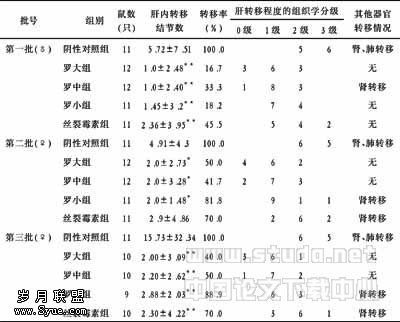内皮祖细胞的研究进展
内皮祖细胞是血管内皮细胞的前体细胞,在生理和病理条件下能够修复损伤的血管内皮细胞,对维持血管内皮细胞的完整性极其重要[1]。1997年,Asahara等人首次分离并证实成年人外周血中存在着能分化为血管内皮细胞的内皮祖细胞(endothelial progenitor cells,EPC),并在体内证实了其生成血管的能力[2]。近年来,内皮祖细胞移植在心脑血管疾病,创伤愈合等血管类疾病的中展现出广泛的应用前景。
1 EPC的来源与识别EPC存在于各种成年动物和人的骨髓和外周血中,主要存在于骨髓。在某些生理、病理状态下,EPC可从骨髓释放,并在外周血中运行。近几年,人们从脐带血中分离出EPC,并成功地诱导其分化为血管内皮细胞。脐带血具有取材方便,富含早期干细胞等优点,可为EPC的研究提供更理想的细胞来源。不同培养时间的内皮祖细胞可能呈椭圆形、长梭形或纺锤形,在形态上无法与其它细胞区分开来,主要靠细胞表面标志来识别。目前将CD34、CD133、Flk1、cKit、Sca1、DiIAcLDL、vWF、VEGFR2等作为EPC主要的细胞表面标志[3、4]。体外研究表明,CD34+、CD133+、VEGFR2+的EPC经VEGF、bFGF等诱导分化后,CD133和CD34表达逐渐减弱,并开始表达血管内皮细胞表面特有的分子标志如CD31、UEA1、vW因子、VE钙黏素等,最终转化为成熟的血管内皮细胞。CD34+、CD133+、 VEGFR3+的EPC体外诱导分化后,可形成表达淋巴管内皮特异性标志:LYVE1和 pdodplanin的淋巴管内皮细胞[5]。
2 EPC在治疗性血管生成中的研究现状EPC促进血管形成无需依赖原有的血管系统,其机制主要有两个方面:一是内皮祖细胞能直接分泌VEGF等细胞因子,通过旁分泌的方式促进局部缺血组织的血管新生;二是内皮祖细胞通过归巢、整合于受损的血管丛,进而直接分化、发育为新生血管[6]。上述EPC参与出生后血管新生的机制,为治疗组织缺血性疾病提供了新的思路:利用一些药物或生长因子,或通过EPC移植,促进内皮祖细胞从骨髓向外周血的动员,提高循环中的血管内皮祖细胞的数量,可以促进新生血管的形成。目前治疗性血管新生主要处于从基础研究向临床治疗过渡的阶段,已有临床应用成功的报道。
2.1 EPC的动员、活化某些细胞因子如VEGF等在EPC的动员、归巢和分化中发挥重要作用。对骨髓外周血的研究表明,VEGF作用于EPC表面的2种受体VEGFR1和VEGFR2,诱导EPC的增殖,并动员EPC从骨髓进入外周血循环[7]。近年来的研究发现,血小板源性生长因子(PDGF)、血管生成素1(anglopoietin1)、成纤维细胞生长因子(FGF)、干细胞因子(SCF)、植物血凝素(PIIA)、HMGCoA还原酶抑制剂等也有动员EPC的作用[8,9,10]。另外,斯伐他丁(HMGCoA还原酶抑制剂)能使稳定性冠状动脉疾病患者体内循环中的EPC数量达到治疗前的3倍左右,EPC的活性也得到增强,这说明斯伐他丁可以通过动员和活化EPC,提高循环中EPC的数量和质量,促进缺血局部的血管新生,从而促进缺血心肌的功能恢复[11]。VEGF还有促进EPC归巢的作用,此外,基质细胞衍生因子SDFlOα与EPC表面的趋化子受体CXCR4结合,在EPC的归巢中也发挥重要作用[12]。而EPC的分化,与黏附分子、黏附后细胞之间的相互作用及微环境有密切关系。SbaaE等发现,小窝蛋白(Caveolin)通过VEGF/NO通路来调控SDF1介导的EPC动员和归巢,从而直接影响血管的新生[13]。SDF1是动员EPC向缺血部位聚集的关键细胞因子之一,能诱导CD34+细胞迁移和EPC管的形成。糖尿病患者的CD34+细胞有明显的SDF1动员缺陷,该缺陷可通过向EPC提供外源NO改善[14]。深入研究EPC动员,归巢和分化的确切机制和影响因素,对于开发具有临床应用价值的药物,治疗缺血性疾病、糖尿病、动脉粥状硬化等有重要意义。
2.2 EPC的移植Akita等在低氧条件下体外培养EPC,然后移植到免疫缺陷的裸鼠缺血下肢,结果显示这些细胞在体内促血管新生的能力明显增强。Takahashi等将体外培养的自体EPC注入肺动脉高压模型的狗的肺组织中,能促进肺组织厚度增加和新血管形成,明显下调肺动脉压力,增加心输出量[15]。Kalka等研究证实,在后肢缺血的裸鼠动物模型中,通过局部注射体外扩增的人内皮祖细胞,能够促进血管新生,显著增加缺血区毛细血管密度,提高组织的血流供应[16]。Hirata等在糖尿病性后肢缺血的动物模型中,通过内皮祖细胞移植,可以改善缺血区的供血状况[17]。Ⅱ型糖尿病患者内皮祖细胞的数量、功能低于正常人群,内皮祖细胞移植到糖尿病人足的局部,可促进新生毛细血管形成、侧支循环建立,从而达到了改善下肢组织缺血的治疗目的,这对糖尿病血管并发症的防治将提供新的思路。另外,把EPC接种于组织工程化微血管可以改善微血管的生物学特性,使其更接近于生理状态,减少凝血和栓塞的发生率[18]。表明内皮祖细胞介导的治疗性血管生成,可用于改善多种病理状态。
2.3 EPC的基因治疗最近有学者提出对EPC进行基因修饰,从而增强其治疗活性。Nagaya等研究者从人脐血中分离并培养EPC细胞,同时构建含有adrenomedullin(AM)(一种扩血管的肽)基因的DNA质粒,再将质粒转染EPC,注射入免疫缺陷的肺动脉高压模型的小鼠,能降低39%的肺血管阻力;而未转染的EPC组,只降低了16%的肺血管阻力[19]。IKeda等研究者将转染了VEGF的人脐血来源的EPC,移植到慢性下肢缺血的大鼠模型体内,转染组的下肢血流比未转染的对照组显著增加[20]。同单纯用生长因子治疗或单纯的细胞移植治疗相比,利用EPC作为种子细胞的基因治疗配合干细胞治疗对血管新生的作用更加有效而显著[21]。
3 展 望利用EPC,可以成功原发性肺动脉高压、心肌梗死、静脉曲张、下肢缺血性等疾病,内皮祖细胞的深入研究为多种疾病的治疗带来了新的希望。另外,研究内皮祖细胞促进血管形成的机制,将为抑制肿瘤血管的新生提供宝贵的理论指导。Thum等提出内源或外源性EPC抑制因子,如氧化型低密度脂蛋白、血管紧张素Ⅱ、葡萄糖、烟草等,可能会成为有效的药物作用靶点[22]。研制能识别这些抑制因子的新药来调节EPC抑制因子的产生,是一项有前途的治疗措施。
参 考 文 献
[1]Matthew J,Callaghan,Daniel J,et al.Hyperglycemiainduced reactive oxygen species and impaired endothelial progenitor cell function[J].Antioxid Redox Signal,2005,7(1112):14761482.
[2]Asahara T,Murohara T,Alison S,et al.Isolation of putative prognitor endothelial progenitor endothelial cells of angiogenesis[J].Science,1997,275(5302):964967.
[3]Akashi M,Hisashi I,Yoshimichi S,et al.Plateletderived growth factorBB(PDGFBB) induces differentiation of bone marrow endothelial progenitor cellderived cell line TRBME2 into mural cells,and changes the phenotype[J].Celil Physiol,2005,204:948955.
[4]Friedrich EB,Walenta K,Scharlau J,et al.CD34/CD133+/VEGFR2+endothelial progenitor cell subpopulation with potent vasoregenerative capacities[J].Circ Res,2006,98(3):e2025.
[5]Salyen P,Mustjoki S,Alitalo R,et al.VEGFR3 and CD133 identify a population of CD34 lymphatic/vascular endothelial precursor cells[J].Blood,2003,101(1);168172.
[6]Hristov M,Erl W,Weber PC.Endothelial progenitor cells:mobilization,differentiation,and homing[J].Arterioscler Thromb Vasc Biol,2003,23(7):11851189.
[7]Rsfii S,Meeus S,Dias S,et al.Contribution of bone marrowderived progenitors to vascular and cardiac regeneration [J].Semin Cell Dev Biol,2002,13(1):6167.
[8]Hettori K,Heissig B,Wu Y,et al.Placental growth factor reconstitutes hematopoiesis by recruiting VEGFR1(+) stem cells from bonemarrow microenvironment[J].Nat Med,2002,8(8):841849.
[9]Di Stefann R,Santoni T,Ammni C,et al.Endothelial progenitor cells induction by shortterm stimulation with phytohaemagglutin of mononuclear cells[J].Cardimc Radiat Med,2002,3(34):169171.
[10]Cai Z,Semenza GL.Phosphatidylinositol3kinase signaling is required for erythropoietinmediated acute protection against myocardial ischenfia/repefusion injury[J].Circulation,2004,109(17):20502053.
[11]Vasa M,Fichtscherer S,Adler K,et al.Increase in circulating endothelial progenitor cells by statin therapy in patients with stable corenary anery disease[J].Circulation ,2001,103:28852890.
[12]Segal MS,Shah R,Afzal A, Nitric oxide cytoskeletalinduced alterations reverse the endothelial progenitor cell migratory defect associated with diabetes [J].Diabetes,2006,55(1):102109.
[13]Sbaa E,Dewever J,Martinive P,et al.Caveolin plays a central role in endothelial progenitor cell mobilization and homing in SDF1 driven postischemic vasculogenesis[J].Circ Res,2006,[Epub ahead of print].
[14]Segal MS,Shah R,Afzal A,et al.Nitric oxide cytoskeletalinduced alterations reverse the endothelial progenitor cell migratory defect associated with diabetes[J].Diabetes,2006,55(1):102109.
[15]Takahashi M,Nakamura T,Toba T,et al.Transplantation of endothelial progenitor cells into the lung to alleviate pulmonary hypertension in dogs[J].Tissue Engineering,2004,10(56):771779.
[16]Kalka C,Mausuda H,Takahashj T,et al.Transplantation of ex vivo expanded endothelial progenitor cells for therapeutic neovascularization[J].Proc Natl Acad Sci,2000,97(7):34223427.
[17]Hirata K,Li TS,Nishida M,et al.Autologous bone marrow cell implantation as therapeutic angiogenesis for ischemic hindlimb in diabetic rat model[J].Am J Physiol Heart Circ Physiol,2003,284(1):H6670.
[18]Wu X,RabkinAikawa E, Guleserian KJ,et al.Tissue engineered microvessels on threedimensional biodegradable scaffolds using human endothelial progenitor cells[J].Am J Physiol Heart Circ Physiol,2004,287:480487.
[19]Nagaya,Norltoshi MD,Kangawa,et al.Hybrid cellgene therapy for pulmonary hypertension based on phagocytosing action of endothelial progenitor cells[J].Circulation,2003,108(7):889895.
[20]Ikeda Y,Fukuda N,Wada M,et al.Development of angiogenic cell and gene therapy by transplantation of umbilical cord blood with vascular endothelial growth factor gene[J].Hypertens Res,2004,27:119128.
[21]Akita T,Murohara T,Ikeda H,et al.Hypoxic preconditioning augments efficacy of human endothelial progenitor cells for therapeutic neovascularization[J].Lab Invest,2003,837:6573.
[22]Thum T,Bauersachs J.Spotlight on endothelial progenitor cell inhibitors[J].Vasc Med,2005,Suppl 1:S5964.











